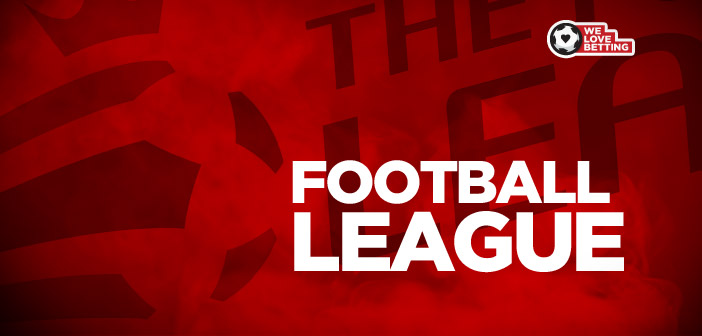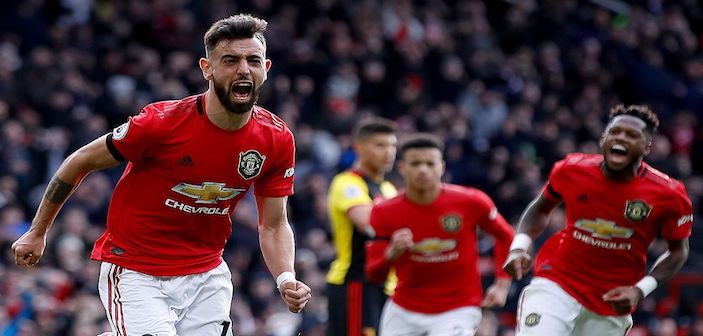FOOTBALL LEAGUE expert Mark O’Haire (@MarkOHaire) explains why he believes Reading won’t win promotion via the play-offs.
Why Reading Won’t Win The Play-Offs | 13th-29th May 2017 | Sky Sports
Firstly, I want to offer my heartfelt congratulations to Reading for reaching the play-offs. It’s a fabulous and unexpected achievement that commands respect from all corners – I’m a Berkshire boy and I’m genuinely chuffed to see the Royals succeeding.
But whilst this piece isn’t an intended assassination to Reading’s play-off prospects, it’s also not been penned to blow smoke up their arse.
The aim of this article is to provide answers as to why the Royals have so regularly been underrated in the pre-match and promotion markets and why I feel they won’t succeed in reaching the Premier League this season.
The most profitable team to bet on
It’s worth starting at the finishing line. Reading concluded their league campaign in third place with 85 points having returned a superb W26-D7-L13 record. Had you stuck £10 on the Royals in all 46 games you’d have bagged a £258.70 profit making Jaap Stam’s side the most profitable team to bet on in 2016/17.
Using Pinnacle’s closing odds, Reading were rated odds-on favourites on just five occasions across those 46 fixtures and were an average price of 21/10 (3.13) at kick-off time. The Royals won 26/46 (57%) of their matches; a percentage figure that implies betting odds of 3/4 (1.75) so already there’s a discrepancy.
But this point is magnified when you view Stam’s side’s home record. At the Madjeski Stadium, Reading won 16/23 (70%) of their Championship encounters, a percentage success rate that would imply betting odds of 4/9 (1.43) – their actual average odds across the campaign at home were 6/4 (2.48)!
So why were Reading so consistently overpriced and underrated? Put simply, bookmakers use computer algorithms and models based on a range of factors that are all tiered towards performance data.
Goals stats
Before we delve deeper, it’s worth a wee glance at the Berkshire boys’ top-level stats. Reading scored 68 goals – the sixth most in the division so nothing unremarkable there – but the Royals leaked 64 – only seven sides shipped more goals in the second-tier.
Stam’s charges produced a goal difference of just +4 despite winning 57% of their games. I don’t know about you but immediately alarm bells begin to ring.
Over the past 20 seasons, no club has won promotion with a goal difference that’s smaller than +9 and no side has ever won promotion having leaked more than 62 goals – that’s two big black marks against the Royals and we’ve not even reached the most important barometers.
Record against the leading lights
Next, it’s worth viewing their record against fellow top-six sides. Reading W4-D2-L4 in their games against the top-six (1.40 points per-game) and that’s about par against their rivals; Fulham (1.90ppg) and Brighton (1.90ppg) were the strongest with Huddersfield (0.6ppg) bottom of the class.
The fact Reading face Fulham in the semi-finals spells trouble, as does the Royals’ negative -7 goal difference accrued over 10 games against the top-six. But most troubling is their regular collapses on the road against the league’s elite.
In two-legged ties, avoiding a drubbing on the road is paramount to progression. The Royals went W2-D0-L9 at top-half teams with a goal difference of -24 as they shipped three goals or more on seven occasions.
Conversely, Reading W8-D3-L0 at the MadStad against the same opposition but their goal difference was a rather tame +9 despite winning eight games and remaining unbeaten. Only one victory was achieved by more than a solitary strike.
Indeed, only Huddersfield (22) won more matches by one-goal margins than Stam’s men (18) whilst eight of their 13 losses arrived by two goals or more. Opponents Fulham secured 14 of their 22 victories by two goals or more and only three of their 10 losses arrived by more than a one-goal margin.
It’s now time to delve into the performance data and find further reasons to oppose Reading and it’s at this stage things get a little ugly for the Royals.
Shot/Shots-On-Target Ratios
I’ll start with the basic shot numbers and shot ratio (TSR). TSR is the ratio of how many shots a team takes versus the number of total shots (actual equation: shots for/(shots for + shots against).
It’s basically a measure of a team’s ability to take shots while preventing opponents from shooting. It’s a good indicator of team strength because it has a reasonably strong correlation to points and goal difference and in this example, Reading rank very poorly.
The Royals took 551 shots and faced 696 for a TSR ratio of 44.19% – that was the third-worst figure in the Championship, only better than Ipswich (43.26%) and Rotherham (39.83%). Any side that’s publishing figures below the 50% mark is unlikely to succeed.
Next, it’s Shots on Target Ratio (SoTR). Worked out in the exactly same format, we can discover how many of those attempts actually landed on-target. For me, this is a much stronger indicator of a team’s strength over TSR.
Reading move up one spot to 21st in SoTR but again their 45.73% return is way below what you’d expect of a side that’s won 57% of their matches. Only Rotherham (40.77%), Blackburn (43.13%) and Burton (44.78%) came out below the Royals in the rankings.
Shots In The Box
Obviously not all performance data is perfect and occasionally there are a few chinks in its armoury. In the case of TSR and SoTR, the numbers don’t take into account the location of the shot.
If Andros Townsend is firing in 10 efforts a game from 30-yards out, his team are unlikely to score but their shot ratios will look wonderfully strong – it’s happened before.
It’s perhaps unsurprising to learn that 75% of goals are scored from shots inside the penalty area and so I take a great deal of interest in recording these figures too. So how good are Reading at getting into shooting positions?
Yeah, not great again. Amazingly, the Royals are 23rd with a Shots In The Box ratio (SITB) of 42.89%. Again, only Rotherham (39.30%) concluded the campaign below them in the standings.
Only Rotherham (471) and Barnsley (452) conceded more attempts from inside their own penalty area compared to Reading (434) whilst only seven sides attempted more attacking efforts from inside the opposition’s box. That’s worrisome.
Across the 46-game campaign, Reading won the shot count on 16 (35%) occasions, the shots on-target count in 16 (35%) games and the shots in the box count in 14 (30%) fixtures. Again, compare those figures with their win rate percentage – it just doesn’t match.
Expected Goals
Finally, the metric that causes most debate and angst amongst football fans – Expected Goals (xG).
Raw shots can’t always tell the whole story and xG has been brought in to add weight and value behind the strength of each effort. In other words, how many goals an average team would have scored with the amount and quality of shots created.
Each goalscoring attempt is assigned a number based on the chance that this attempt produces a goal. Typical parameters to use are shot location and shot type (shot vs. header). It’s a growing force in football analytics because there’s a great correlation between strong xG numbers and team strength.
So what about Reading? You guessed it, they’re performing below-par. Reading’s 42.99% xG ratio is only better than Ipswich (38.96%) and Rotherham (37.38%) as only Rotherham returned a worse xG against figure across the full campaign. Yikes.
Conclusion
Reading rank in the bottom-four for all of the four key metrics – TSR, SoTR, SITB and xG yet they’ve somehow managed to finish third in the Championship; an almighty achievement.
Their passing and possession-style may have had an effect on their attacking output but it’s quite alarming to see the Royals amongst the front-runners in all the performance data concerning shots conceded.
Stam’s side often starve their opponents of the ball – in 36 games they enjoyed more than 50% of possession – yet they’ve still managed to have their own goal peppered with attempts far more regularly than the large majority of the division.
What’s more, a chunky 28 (41%) of their 68 goals arrived from direct set-piece situations – and that’s discounting penalties missed and converted on the rebound. So although I’m not foolish enough to dismiss the quality of the squad in key areas, they’re simply not sustainable numbers.
These figures are what provoke bookmakers models into pricing teams a certain way and considering the Royals’ defence is by far the worst in the top-six, they’re reliant on set-pieces, have poor xG figures and fire in the fewest attempts, is it any wonder the bookies are offering lumpy odds on a Reading promotion?
Hopefully that’s given you food for thought – for me, the overwhelming evidence stacks up against Reading and I’ll be opposing the Berkshire boys in both of their play-off legs against Fulham (not that the prices appeal).
TOPICS Football League TipsBest Bets
Reading v Fulham – Fulham to qualify (3/5 888)








